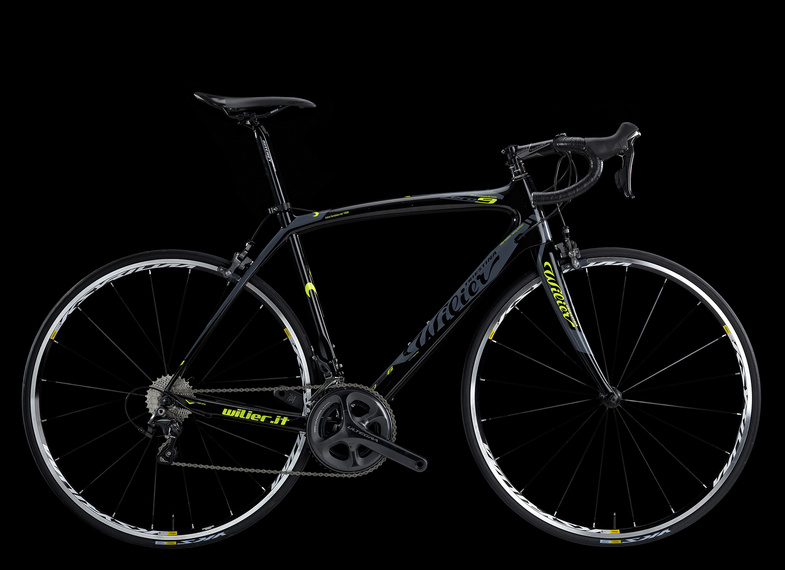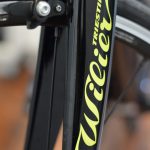The 2014 U.S. National Road Cycling Championship was a lively race, full of unexpected twists, attacks and breaks. When Eric Marcotte crossed the finish line and won the title, he was riding his trusty stead the Wilier Zero Nine.
The field was strong. He was racing against favourites like Taylor Phinney, Ben King, Phil Gaimon and Alex Howes.
It was an exciting finish. After a gruelling final climb which stretched the already tired front group Zwizanski attacked. Semper grabbed his wheel and Jones and McCabe joined.

Jones attacked again with just 2km to go. But the chasing group wasn’t far behind.
Finally, in the last corner the attackers were caught by the chasing group. With Jones, Wren, Stemper, Kyer, Marcotte, Howes, Zwizanski, Rathe, McCabe, Miller, Butler, Reijnen and Busche coming together, it came down to a sprint finish.

It was a fitting end to the season for both Marcotte and the Wilier Zero 9. By the end of the year they had seen numerous podium finishes. Something race journalists may not have expected for the Wilier Zero.9 – the Cinderella in the family of Wilier pro bikes.

In 2015 Outside Magazine ranked the Wilier Zero.9 2nd after the Specialized Tarmac and above the Trek Emonda. Dramis wrote, “It seems like every year Wilier sends a bike to the Test is another year a Wilier makes it into the Top 3. Every Wilier I’ve ever tested has been a standout, from the Cento 1 to the incredible Zero.7, they’ve all been winners. The Zero.9 continues that tradition.”
Unlike its two racing siblings (The Zero.7 and the Cento Uno) the Zero.9 had been largely missed by journalists, due in part to their enthusiasm for the Zero.7, and by some pro-racers as they moved towards specialization.
The reason, you ask? It was partly because of marketing and partly because of its name Zero.9.
The Zero.7 is an excellent climbing bike weighing in under 790 grams and less, hence the name Zero.7. While the Cento Uno is an aero bike weighing just under 1300 grams.
Because the Zero.9’s frame weight was also under 1000grams, it was given the same Zero. naming style. With a size M weighing in at 940 grams.
But the name created confusion in the market place. With many people assuming that Zero.9 simply meant it was a heavier version of the Zero.7. Much like the Trek Emonda SL is a heavier variant of the Trek Emonda SLR.
But Wilier had built a very different bike. They tried to describe it in their marketing by comparing it to both the Cento 1 and the Zero.7. It was a bike for climbing, like the Zero.7, but it’s stiffness wasn’t limited by the hill climber’s 790 gram limit. And unlike the Cento Uno, it wasn’t an outright aero bike either.
With a race geometry, an oversized bottom bracket, and the same carbon construction as the Cento Uno, Wilier seemed unsure of where to place it in an increasingly specialized field.

But the Zero.9 has yet another surprise. It’s an incredibly good road bike.
Road.cc wrote, “The Wilier Zero 9 is a performance orientated road bike … for people who want to get around the course as fast as possible.”
In 2015 Outside Magazine ranked it 2nd after the Specialized Tarmac and above the Trek Emonda. Dramis wrote, “It seems like every year Wilier sends a bike to the Test is another year a Wilier makes it into the Top 3. Every Wilier I’ve ever tested has been a standout, from the Cento 1 to the incredible Zero.7, they’ve all been winners. The Zero.9 continues that tradition.”
Bicycling Magazine concluded, “If you want a bike to toe the start line and be a contender at the finish—just add your pedals and bottle cages, and the Zero.9 is ready to go.”
So what made the Zero.9 so good? Wilier, an Italian Bicycle company since 1906, is known for producing top-end road bikes. They take what they learn from each model and improve the next. In recent years they invented the asymmetrical chain stay to improve power transfer from the chain to the rear cassette and the 386 bottom bracket to reduce the flex from the pedal to the bottom bracket.
When they made the Zero.9 they continued in this tradition. The Zero.9 geometry and the Zero.7’s are virtually identical. Also, like both the Zero.7 and the Cento Uno, the Zero.9 uses the high-modulus 60-ton carbon fibre in its construction. Making it a very strong, lightweight, and responsive machine.


But they also improved the Zero.9 where they could. With a spec at just around 960grams, they had room to improve stiffness with the addition of carbon layups where it was most needed. And they kept the 386 bottom bracket. The outcome was a balanced bike that rides confidently in descents and sprint finishes.

While the Zero.7 was heralded as one of the world’s best climbing bikes, due to the fact that it is one of the most balanced lightweight frames in the peloton, it did have one flaw – a bit too much flex.
The Zero.9 fixes that problem. Brad Ford of Bicycling magazine remarked, “Through turns and on descents, I could pilot the Zero.9 with confidence.” And the power transfer of the 386 bottom bracket with the Asymmetrical chain stays makes it incredibly light and responsive when attacking.

But one of the best surprises of the Zero.9 is the comfort. For a bicycle designed to be stiff and lightweight, the geometry and carbon do an excellent job of providing a comfortable ride. This was one of the things I noticed during rides.
Eric Marcotte shared with Bike Radar that if he were to have the opportunity to ride the Zero.9 again he would. “Haven ridden and trained on this frameset for a year now, I’d choose it myself. Super responsive, great position and comfort for me on the bike, good positioning over the bottom bracket for cornering, stiffness in the bottom bracket, and sharp front end.”

In the Dutch magazine Bike & Trekking, the Zero.9 was also well received. They wrote that out of the 3 Italian race bikes they reviewed Bianci Intenso, Olympia Ikon and the Wilier Zero.9, it was “the Zero.9 that would have a permanent place in my shed.”
Conclusion
In an age where manufacturers are searching for marginal gains and aggressive frame redesigns the Zero.9 continues in the tradition of the pure race bike. Wilier has taken great bicycles and improved on them year over year. The result? An Italian bicycle that evokes emotions with a design that places emphasis on form, function and history.
While the Zero.7 and Cento Uno find themselves neatly in the categories of Climbing and Aero frames, the Zero.9 defines its own. It is uncompromising in its power transfer, comfortable over diverse terrain, and light enough to crest any climb at the head of the pack. It is a Racer’s bike.
I’ve found this bike to be perfect for the hilly countryside of my area. And as a bike that is on the rarer side, if you do have an opportunity to ride it, I would highly recommend you take it.
















